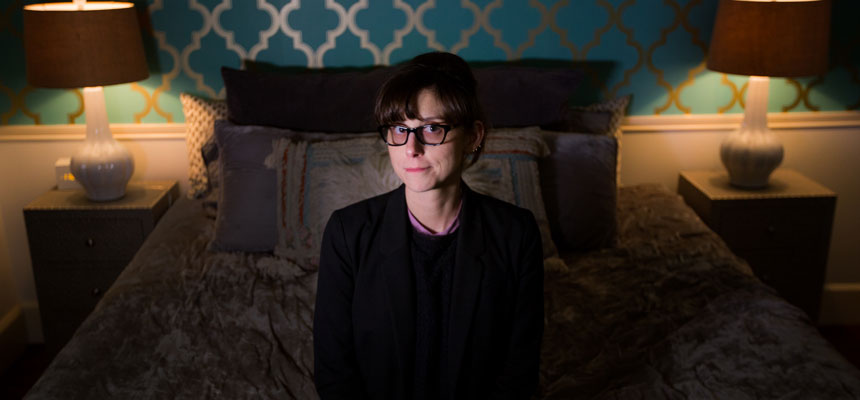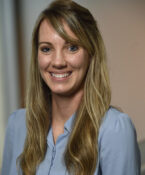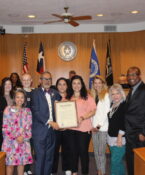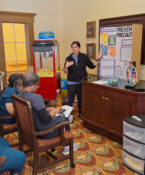The science of sleep: 10 tips for better rest
By Alex Branch
Blackout curtains darken the windows in rooms where Brandy M. Roane’s family spends time after dinner, namely the bedrooms and the office and gaming room.
Table lights, not bright overhead lights, provide illumination. As the hour grows late, an alarm sounds to remind Dr. Roane, her husband and two teenage boys to shut down any electronic equipment they’re using.
It is time to get ready for bed. Not surprisingly, the Roanes sleep well.
Roane, PhD, an Associate Professor of Physiology and Anatomy at UNT Health Science Center, is a certified behavioral sleep medicine specialist. Her family’s carefully crafted bedtime routine is an example of the help she provides children, teens, families and adults with sleep disorders.
Dr. Roane has spent her career researching sleep patterns and how sleep disorders impact health. Here are 10 things about sleep she says you should know:
1. Our bodies do amazing things during sleep.
It is kind of weird to think about – but every night we lie down and become unconscious and paralyzed. During our brain’s most active phase of sleep – called Rapid Eye Movement (REM) sleep – our bodies lose all muscle tone.
“Our eyes and our diaphragm are the only things moving,” Dr. Roane said.
During sleep, our blood pressure and body temperature drop. Growth hormones release. Memories consolidate. Muscles repair. Our brains’ nerve cells rewire, mapping new connections and discarding old ones. Our immune system enters overdrive.
“Scientists have researched what happens when you deprive animals of sleep,” Dr. Roane said. “And, quite simply, they die. Sleep is required to sustain life.”
2. Not all sleep is the same.
There are four stages of sleep, each one necessary.
Stage 1 is the transition from wakefulness to sleep, hazy moments when we still hear noises around us.
Stage 2 is the first official stage of sleep, though it’s not yet deep.
Stage 3 is deep sleep. This is the restorative stage, when the body repairs itself and memories are transferred from short-term memory to long-term memory. If awakened, we feel the groggiest.
Stage 4 is REM sleep – the final stage. It’s the stage when our brain is exploding with activity and cleaning out clutter that did not make it into long-term memory.
“To reach REM sleep, you have to go through at least one other stage first,” Dr. Roane said. “If you wake up, you don’t always immediately sleep back into the stage you woke from. Your sleep becomes fragmented, or disorganized. That’s why sleep disturbance is so problematic.
3. Naps are not our friend.
Dr. Roane discourages naps in most patients over the age of 6. Two hours of sleep during the day may feel necessary but doesn’t help you reach REM sleep at night.
In fact, naps make restorative sleep at night more difficult. We build sleep pressure – basically sleepiness – during the day. At night, we relieve it during sleep.
Sleep pressure takes twice as long to build as it does to release. Naps release that pressure prematurely, making it harder to get to sleep at night and achieve all four sleep stages.
“If you must nap, do it before 2 p.m. and limit it to 20 minutes,” Dr. Roane said. “It can still feel refreshing without releasing too much sleep pressure.”
4. There is a reason we feel tired every afternoon.
Our bodies’ functioning is coordinated by the master clock – a group of about 20,000 neurons that comprise the suprachiasmatic nucleus, situated in the brain just behind the optic nerve that connects to each eye.
This master clock produces a circadian rhythm that promotes alertness and runs on a 24-hour cycle.
This rhythm usually dips to its lowest activity between 2 a.m. to 4 a.m. when most of us are asleep. But it also dips between 2 p.m. and 4 p.m. to allow our sleep drive to build pressure.
That’s why we often feel drowsiness in the afternoon.
“If you just feel drowsy, that is perfectly normal,” Dr. Roane said. “If you feel like you are about to nod off or need a nap badly, that means you aren’t getting sufficient sleep at night.”
5. A ‘second wind’ is a missed sleep window.
Sometimes we feel tired all day but get a “second wind” of alertness by the time we get in bed to sleep. That might be because we missed our sleep window.
Our master clock wants cues for it to stop promoting wakefulness. It wants us to go to bed at the same time each night and follow a familiar bedtime routine.
But if we took a nap earlier or we didn’t dim the lights as evening fell, we get into bed and don’t feel tired enough to sleep. We resort to non-sleep conducive behavior, such as looking at our phones.
Our master clock is surprised.
“It says ‘Oh, we’re not going to sleep right now! Let me help you stay awake.’ And we get that second wind,” Dr. Roane said.
Sleeping late in the morning can have the same effect. It sends a signal to the master clock that the daily timing of things has shifted later.
“That’s why it is so important to pick a sleep schedule and stick to it,” she said.
6. We worry at night because a bear might eat us.
Not really, but the concept is the same.
In primitive days, sleep was a dangerous task. We lay defenseless as danger lurked –a large, hungry bear, for example. For those predisposed to sleep problems, it’s like our minds are wired to be hyper-vigilant to threats during sleep.
In modern times, we no longer fear the bear, so our minds seize upon other anxieties. We lie in bed brooding over stresses at work, money problems or that weird creaking noise coming from the kitchen.
Our fight-or-flight instinct activates, quickening our heart and breathing rates, and making it even harder to get to sleep.
“Anxiety and insomnia go hand in hand,” Dr. Roane said. “People already prone to anxiety often struggle the most with this.
7. Sleep aids often don’t work but are hard to quit.
Most sleep aids don’t work well because sleep is such a balance of our body’s mechanisms that forced medicated sleep doesn’t have the same restorative value, Dr. Roane said.
However, once we start taking a sleep aid, it’s difficult to stop. The body essentially throws a temper tantrum because it isn’t getting something it has come to expect. So it becomes harder than usual to sleep the first and second nights after we quit.
On the third night, we cave. We take the sleep aid and sleep better. Not because the sleep aid worked, but because our body’s tantrum has ended.
“I tell patients that if they can hang in there one week, their sleep will go back to normal or often even better than before they started using sleep aids,” Dr. Roane said.
8. Sleep is the magic from which memories are made.
Sleep is critical to our memory.
As things happen to us throughout the day, sensory information enters our brain. Our brains decide what is important and moves it to our working memory. Our brain then determines what needs to be filed in our short-term memory. Think of this as the “temp folder” on a computer.
During sleep, those memories get transferred to our long-term memory. Think of that as the computer’s hard drive. The transfer isn’t perfect; some things get lost. But without deep sleep, the information accumulated throughout the day clutters up our short-term memory, and we struggle to process new information the next day.
“So we start merging information and our memories become confused,” Dr. Roane said. “That’s why cramming all night for a big test is a bad idea if you actually need to learn something.”
9. We should eat peanut butter and crackers.
Going to bed with a full stomach is not conducive to good sleep. It leads to discomfort, acid reflux and, because we digest food slowly at night, makes us more likely to skip breakfast.
Breakfast is a cue for our master clock to know we have started our day and to promote wakefulness.
Dr. Roane recommends eating dinner at least three hours before bedtime. But going to bed hungry is not conducive to good sleep either. So a light snack before bed of less than 200 calories that includes a protein and a carbohydrate can tide us over without making us full.
Peanut butter and crackers is a great choice, she said. A boiled egg also does the trick.
10. We are all different.
There is no fix all for our sleeping problems.
Just like some of us hold our alcohol better than others, some of us handle less sleep better than others. Not all of us require the same amount.
The trick is to find the amount that suits each one of us and stick to it.
“Think ‘Goldilocks,’” Dr. Roane said. “Not too little. Not too much. But just right.”






Social media